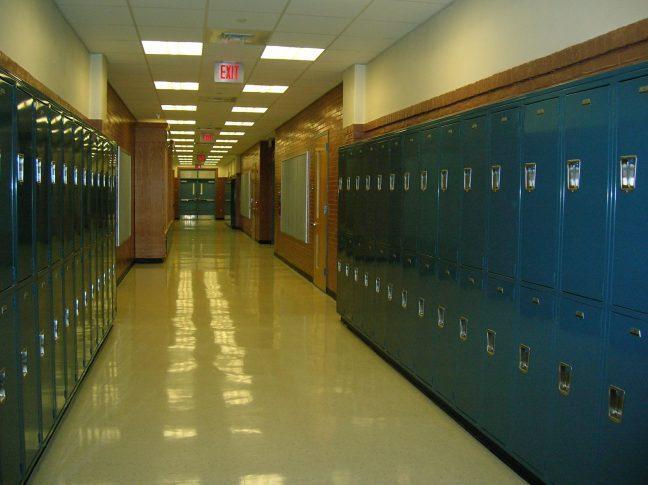It’s 6:30 p.m. on a Monday when a young Black girl, a student at Whitehorse Middle School, steps up to the podium, staring up at the school board seated on the stage above her. “This a new mic or something?” she asks rhetorically before bringing forward the same accusations of racism that activists like her have been making for the past two years.
The March 18 Madison Metropolitan School Board meeting was the second in two months to be relocated and live-streamed to the public after activists associated with Freedom Inc. demanded accountability for a string of racist incidents in the district. This is no accident. The structure of the Madison Metropolitan School Districts meetings is designed to minimize the voices of its most vulnerable constituents.
Freedom Inc. activists began attending school board meetings nearly two years ago to speak out against the discriminatory practice of student resource officers, police officers stationed in all four of the district’s high schools who arrested four black students for every white student in the academic years from the 2013-14 academic year to the 2015-16 academic year. This December, the school board voted to continue the Student Resource Officer program through 2022 at a cost of more than $360,000 a year.
Just this February, a white administrator at Whitehorse Middle School ripped the braids out of an 11-year-old Black student’s head after she sprayed too much perfume. Since October 2018, there have five reports of teachers or substitute-teachers using racial slurs in the classroom. Throughout the past year, the claims of systemic racism brought forward by Freedom Inc. have been proven true time and time again. So why has nothing been done?
Whether it’s through wishful thinking or willful ignorance, MMSD fails its students
One place to look is the structure of the school board’s public meetings. After the call to order and approval of minutes, the regular board of education meeting moves into the public appearances, during which members of the public who signed up on the list outside before the meeting began are allotted up to three minutes to speak. They speak standing up at a podium several feet away from a stage, flanked by security, where school board members are seated looking down at the speaker. The speaker is given three minutes, after which the microphone can be turned off remotely by someone on stage.
This occurred only while individuals of color were speaking at the March 18 meeting. After each speaker leaves, the name of the next speaker is projected onto a screen and this person takes their three minutes. This happens without any response from the school board members. Once every member who was able to sign up before the names were entered into the computer has spoken, the meeting moves on to various reports, action items and votes, but at no point must respond to the concerns that have been brought forth.
Mayoral candidates discuss education, youth violence, police in schools
This, at least, is what would have happened, had chanting from individuals in attendance not led the board to stop the public appearances portion of the meeting early, relocate the meeting to a private location and live stream the remaining agenda items to the projector in the auditorium where the public remained.
The Board of Education’s public meetings are just for show — they are fundamentally undemocratic. Their structure has been designed so that officials may ignore concerns they wish not to address and has allowed for the perpetuation of racism in the district’s schools. Board members can only be held accountable on election day once every three years, which are staggered to prevent rapid change. This is the structure of an institution designed to perpetuate inequality.
Adam Fendos ([email protected]) is a sophomore majoring in international studies.














